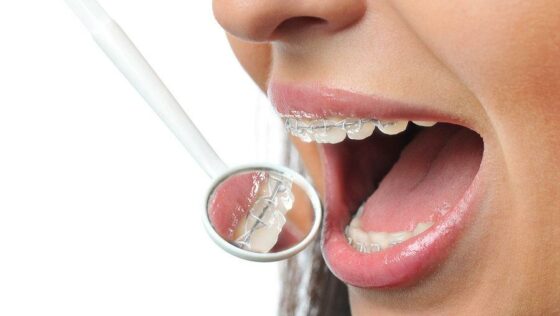7 Simple Techniques For Legacy Orthodontics
Table of ContentsFacts About Legacy Orthodontics RevealedWhat Does Legacy Orthodontics Mean?What Does Legacy Orthodontics Mean?The 30-Second Trick For Legacy OrthodonticsLegacy Orthodontics Things To Know Before You Get This
In enhancement, we offer adjustable treatment schedules, adaptable settlement options and a fun, pleasurable experience.An orthodontist is a dental professional trained to identify, protect against, and treat teeth and jaw irregularities. They deal with existing problems and are trained to determine issues that might develop in the future. Orthodontists deal with people of any ages, from youngsters to adults. People commonly connect a best smile with excellent health.
Malocclusion, or misaligned teeth, can result in dental concerns, consisting of dental caries, periodontal disease, and challenging or uncomfortable eating. But not everybody is birthed with straight teeth. If you have a poor bite or big spaces between your teeth, you might intend to seek advice from a dental professional focusing on orthodontic treatment.
See This Report about Legacy Orthodontics
( Image Debt: DigitalVision/Getty Images) Orthodontists make use of fixed and removable dental tools, like braces, retainers, and bands, to transform the position of teeth in your mouth. Orthodontic therapy is for oral irregularities, including: Crooked teethBite troubles, like an overbite or an underbiteCrowded teeth or teeth that are too far apartJaw misalignmentThe objective of orthodontic treatment is to improve your bite.
A healthy bite guarantees you can eat, chew, and talk correctly. While you might think of orthodontists as primarily for youngsters or teenagers that need dental braces, they can remedy oral troubles at any age. Orthodontists attend college, dental school, and orthodontic school. After college graduation, they invest 2 or 3 years in an orthodontic residency program.
All orthodontists are dental professionals, but not all dental professionals are orthodontists. Orthodontic residency programs provide intensive, focused instruction for dental experts. They focus on 2 areas: Just how to effectively and safely relocate teeth Exactly how to correctly guide advancement in the teeth, jaw, and faceOnce an orthodontist has actually completed training, they have the alternative to end up being board accredited.
Facts About Legacy Orthodontics Uncovered
Imbalance, or malocclusion, is the most common factor people see an orthodontist. It is hereditary and is the result of dimension differences between the top and lower jaw or in between the jaw and teeth. Malocclusion leads to tooth congestion, an irregular jaw, or irregular bite patterns. Malocclusion is normally treated with: Your orthodontist affixes metal, ceramic, or plastic square bonds to your teeth.
Some individuals require a headwear to help relocate teeth into line with stress from outside the mouth. A retainer is a customized gadget that keeps your teeth in place.
They're most frequently made use of on children. They can create added space in the mouth without having to pull teeth. If you have a severe underbite or overbite, you could require orthognathic surgery (likewise called orthodontic surgical procedure) to extend or reduce your jaw. Orthodontists utilize wires, medical screws, or plates to support your jaw bone.
You might need to see an orthodontist if you have: Crowding or otherwise sufficient space for all of your teethOverbite, when your top teeth come by your bottom teethUnderbite, when your bottom teeth are also far forwardSpacing or problems with gapsCrossbite, which is when your top teeth fit behind your base teeth when your mouth is closedOpen bite or an upright space in between your front base and top teethMisplaced midline, when the facility of your base and upper teeth don't line up Dealing with a dental malocclusion can: Make biting, eating, and speaking easierImprove the balance of our face and your general appearanceEase discomfort from temporomandibular joint disordersSeparate your teeth and make them less complicated to clean up, helping stop dental cavity or tooth cavities It's commonly a dental practitioner that first notices misaligned teeth throughout a routine exam.
What Does Legacy Orthodontics Mean?

During your initial orthodontic assessment, you'll likely have: An oral examPhotos taken of your face and smileDental X-raysPanoramic (360 level) X-rays of your face and headImpressions to develop mold and mildews of your teethThese examinations will aid your orthodontist recognize how to wage your therapy. leesburg orthodontist. An orthodontist is you can try here a dental practitioner that's had training to treat your teeth and jaw
Orthodontists may carry out surgical treatment, exams,X-rays,and more to assist you obtain a more comfortable, much healthier smile. An orthodontist is focused on your bite, so something like a cracked tooth would be managed by a dental professional. Orthodontists are dental professionals but not all dental professionals are orthodontists. Orthodontists are concentrated on your bite, or the way your teeth meshed, and the straightness of your teeth.
Ever before wondered just how stars always appear to have completely aligned teeth? Orthodontists are oral specialists that concentrate on fixing irregularities in the teeth and jaws.
Not known Details About Legacy Orthodontics

, orthodontists have a varied toolkit at their disposal. These reliable braces make use of a system of brackets bound to the teeth and connected by cables.
These detachable trays are personalized to gradually change the teeth's position. In instances of narrow jaws, palatal expanders can be used to produce room for appropriate tooth alignment.